












ARTS & CULTURE
Cozy
FOOD
HEALTH

















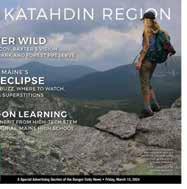




















































Cozy
























































WINTER IS MY FAVORITE. YES, I’M ONE OF THOSE. I grew up in northern Maine, where a love of winter is required. I can appreciate what each season brings — spring days when the temperatures finally start to rise and 50 degrees feels like heaven. Jumping into a cool lake on a hot summer day. The crunch of colorful leaves in the fall. I love all seasons, but winter always feels the most special to me. That first snowfall. Getting cozy under a blanket with a good book (Robin Clifford Wood shares some beautiful Maine books to add to your winter reading list on page 12). Decorating for the holidays (discover where you can learn to blow your own glass ornaments on page 26). Hitting the slopes with pink cheeks and a little après to look forward to. Watching for flags on a frozen lake. There’s something magical in the sparkle of winter.
I’m not the only Mainer inspired by winter’s wonders — Richard Shaw explores how winter has been inspiring writers for years on page 10. If you’re looking to get outside, follow Aislinn Sarnacki around a wintery Acadia National Park on page 20. Or stay toasty inside and bake some classic recipes with a Maine staple — Bakewell Cream — on page 16.
If you’re looking for a little holiday cheer, read up about the Anah Shriners’ Feztival of Trees on page 30. My family looks forward to the event every year to kick off the holiday season. And flip this issue over for our Holiday Gift Guide, a helpful resource for local shopping and ideas for everyone on your list. No idea what to get your father-in-law? We’ve got it covered. What about the Swiftie in your life? Fans will freak for the collection of local goodies Marissa Donovan scouted out — the Maine small business version, if you will. We’ve also got tips and recipes for holiday hosting.
Tis the season to make plans for the New Year as well. We’ve got easy ways to get healthy in 2025 (see page 34), and we’re exploring the benefits of acupuncture on page 24. My New Year’s resolution? Unplugging from screens for a few hours a week — Sarah Cottrell dives into the good it could do you on page 38.
There’s so much to explore in this issue — enough to keep you busy all winter long.
Thanks for reading! HERE'S A LITTLE SOMETHING JUST FOR YOU!




AMY ALLEN EDITOR & ART DIRECTOR


P.O. Box 1329
Bangor, Maine 04402-1329
Phone: 207.990.8000

PUBLISHER
Richard J. Warren

SALES MANAGER
Laurie Cates lcates@bangordailynews.com

EDITOR & ART DIRECTOR
Amy Allen aallen@bangordailynews.com









CONTRIBUTING WRITERS, PHOTOGRAPHERS, & PROOFREADERS
Katie Bingham-Smith, Stephanie Bouchard, Robin Clifford Wood, Sarah Cottrell, Marissa Donovan, Anne Gabbianelli, Judy Harrison, Jodi Hersey, Emily Morrison, Kaylie Reese, Crystal Sands, Aislinn Sarnacki, Richard Shaw, Sarah Walker Caron
Bangor Metro Magazine. Winter 2024, Vol. 20, No. 4. Copyright © Bangor Publishing Company.
Bangor Metro is published 4 times annually by Bangor Publishing Company. All rights reserved.
This magazine may not be reproduced in whole or part in any form without the written permission of the Publisher.
Opinions expressed in either the editorial or advertisements do not represent the opinions of the staff or publisher of Bangor Metro magazine. Advertisers and event sponsors or their agents are responsible for copyrights and accuracy of all material they submit. Bangor Metro magazine to the best of its ability ensures the acuracy of information printed in the publication.
Inquiries and suggestions are welcome and encouraged. Letters to the editor, story suggestions, and other reader input will be subject to Bangor Metro’s unrestricted right to edit and publish in the magazine both in print and online.
Editorial:
Queries should be sent to Amy Allen at aallen@bangordailynews.com.
Advertising: For advertising questions, please call the Sales Manager Laurie Cates at 207-745-2419.
Accounts Payable/Receivable: For information about your account please contact Todd Johnston at 207-990-8129.
COVER BACKGROUND IMAGE: Colnihko/Adobe Stock

























































































































































WE’RE FORTUNATE TO HAVE THESE TALENTED & CURIOUS WRITERS SHARING STORIES THIS MONTH.
INTERESTED IN JOINING OUR RANKS? EMAIL AALLEN@BANGORDAILYNEWS.COM FOR MORE INFORMATION ABOUT WRITING FOR BDN SPECIAL SECTIONS.

ANNE GABBIANELLI has enjoyed a robust career as a freelance writer, broadcast journalist, and college professor. Her articles about the fascinating people and history of Maine have been published in several magazines, newspapers, and other periodicals. She finds her subjects as she travels throughout the state, discovering hidden towns, visiting museums, and exploring local lore. Anne is also a hospice volunteer who meets amazing people who often share their life stories with her.


JUDY HARRISON is the award-winning, freelance theater critic for the Bangor Daily News. She retired in 2023 after covering the courts for more than 20 years. Harrison has lived in Little City, Bangor’s best neighborhood, since February 1984.
MARISSA DONOVAN is a contributing writer for the Bangor Metro and Bangor Daily News Special Sections. She was born and raised in Deer Isle, and graduated from Colby-Sawyer College in New London, NH, with a Bachelor of Arts degree in creative writing. In her downtime she enjoys reading, listening to podcasts, and gardening. Marissa is always seeking out feel-good stories and upcoming events in Maine to share with Metro readers.
RICHARD SHAW is a Bangor native who lives and breathes local history. In 2021, the city named him its honorary historian and presented him with a key to the city. When Dick isn’t writing freelance articles, providing television commentary, or compiling best-selling vintage photo books for Arcadia Publishing, he might be photographing old graveyards or haunted houses. His long careers with the Bangor Daily News and the City of Bangor have provided him with fodder for untold stories and editorial opportunities. On his horizon is a possible novel involving Bangor’s colorful lumbering era.


STEPHANIE BOUCHARD is an editor and writer based in the Midcoast. She writes about health/wellness, business, pets and Maine life and people. She has been published locally and nationally in publications such as the Portland Press Herald/Maine Sunday Telegram, the Working Waterfront, Island Journal, The Maine Monitor, WSJ.com, Caregiving, Chicago Health and Cosmopolitan magazines, MensHealth.com, and the Washington Post’s The Lily. Find her at stephaniebouchard.net.
SARAH COTTRELL is a writer, editor, and online content creator from midcoast Maine. She is currently an editor at Parents Magazine and is working on her first novel. Learn more about her writing on Instagram @housewifeplus and Medium @sarahcottrell, and sign up for her newsletter sarahcottrell. substack.com where she shares freelancing advice.


KATIE BINGHAMSMITH is a full-time freelance writer. She’s a staff writer for websites such as Scary Mommy, Grown and Flown and The Girlfriend. You can also follow her fashion adventures on Instagram @katiebinghamsmith.










JODI HERSEY is a reporter with ABC7 & FOX22 in Bangor. Over the years, she’s had the privilege of writing for all sorts of platforms including television, radio, magazines, and newspapers. When she’s not working, Jodi enjoys giving back to her community by volunteering at a number of nonprofits. Jodi is a proud military wife, mom, and a huge fan of classic cars.

CRYSTAL SANDS is a writing professor, homesteader, and editor of the journal Farmer-ish, a journal dedicated to farming arts and education. When she is not saving seeds or tending chickens, she is writing daily for the Farmer-ish blog. You can follow her adventures in homesteading in rural Maine at www.farmer-ish.net.


Make the season more merry with a fun Pop Quiz!

NOV. 23
HOLIDAY MARKET AT THE SKEHAN RECREATION CENTER
Shop local crafters and vendors galore, just in time for the holidays. Stop by the Skehan Recreation Center at 1 Main Road in Hampden from 9 a.m.-2 p.m. The concession stand will be open!
23
Join the Hampden Historical Society for its annual holiday bazaar from 8 a.m.-2 p.m. at the Kinsley House Museum at 83 Main Road South in Hampden. The Kinsley House, which dates from 1794 and features extensive genealogy files and tastefully curated exhibits, will be charmingly bedecked with old-fashioned decorations and overflowing with baked goods, handmade items and crafts, jewelry, evergreen swags, and treasures galore. Weather permitting, there will be a photo opportunity with an old-fashioned sleigh and perhaps a visit from Santa. The Hampden Historical Society is an allvolunteer, nonprofit organization, devoted to preserving and sharing Hampden’s rich history. The museum is open every Tuesday from 10 a.m.-2 p.m. from January to November, or by appointment. For more information, call (207) 862-2027 or email hampdenhistorical@gmail.com.
23-24
Find the answers below!
Celebrate Maine’s harvest season at the Cross Insurance Center in Bangor Nov. 23-24. Sample the best of the best from Maine farmers, food producers, vintners, brewers, distillers, and shop creations from local fiber artisans, home cooks, and more. The event is free and doors open at 10 a.m. both days. maineharvestfestival.com
NOV. 29-DEC. 31
Join in the celebration of 10 dazzling years of Gardens Aglow! An annual tradition for many New England families, more than 780,000 visitors have experienced the magic of Maine's premier light show. In addition to two of the garden’s popular Trolls, you'll find an enchanting forest with mushrooms and shooting stars. All tickets must be purchased in advance. gardensaglow.org
First held in 2015 as a self-timed, glorified flash mob, the Millinocket Marathon & Half was started to help Maine’s most prominent mill town, which was devastated by the closing of their major employer, Great Northern Paper Company. Runner’s World Magazine picked up the story shortly after, and the rest is history. The only requirement for runners is to generously support local businesses and contribute to the Katahdin region in some way. Any money raised above and beyond essential race expenses will be donated to charitable Millinocket area groups or organizations. Register by Nov. 1.
RUNMILLINOCKET.COM
7
The Rotary Club of Bangor will host its annual Festival of Lights Parade in downtown Bangor on Dec. 7 starting at 4:30 p.m. Get in the holiday spirit with dozens of lit-up floats, marching bands, dancers, and more. bangorrotary.org













DEC. 14
BANGOR AUTHORS’ BOOK FAIR & LITERARY FESTIVAL
The third annual Bangor Authors’ Book Fair & Literary Festival is set for Dec. 14 from 10 a.m.-3:30 p.m. at the Bangor Public Library. Meet dozens of local authors, buy books, and enjoy readings and panels throughout the day. This year’s keynote speaker is Paul Doiron, author of the Mike Bowditch Mysteries. The fair is organized by Christopher Packard, author of “Mythical Creatures of Maine,” in cooperation with the Bangor Public Library.
DEC. 21-22
THE NUTCRACKER AT THE COLLINS CENTER FOR THE ARTS
A holiday tradition for all ages, the Bangor Symphony Orchestra’s annual production of The Nutcracker with the Robinson Ballet is beloved by audiences throughout Maine. Join us for a magical afternoon as Clara, the Sugar Plum Fairy, and the Nutcracker grace the stage of the Collins Center for the Arts as the Bangor Symphony Orchestra, Bangor Area Youth Choirs, and conductor Lucas Richman bring Tchaikovsky’s score to life.



















BY RICHARD SHAW
In “Woods in Winter,” poet Henry Wadsworth Longfellow wrote about the season's “piercing chill.” E.B. White penned a poem titled “Trees of Winter,” which mentions, “Of branch bent, and leaf that withers.” And who can forget Annie Wilkes holding writer Paul Sheldon captive in her snowbound mountain home in Stephen King's chilling novel “Misery,” also a play and movie?
Singer-songwriter David Mallett recorded the song “Snowbound,” and country baritone Dick Curless scored a hit record in 1965 with “Tombstone Every Mile,” written by Dan Fulkerson, in which he chronicled a white-knuckle drive through Aroostook’s dreaded Haynesville Woods.

“When you’re loaded with potatoes and you’re headed down You’ve got to drive the woods to get to Boston town
When it’s winter up in Maine better check it over twice That Haynesville road is just a ribbon of ice.”
Maine winters may be more mild these days, but the state's most loved and loathed season still inspires novels, poems, plays, songs, and movies. Is it a wonderland or cabin-fever season? A time to strap on the skis or hibernate for six months?
Perusing your library may prove that winter, arguably Maine's most written
about season, has always been viewed differently by its writers. The cold, the wind, and the white landscapes are ready-made to bring out the writer in all of us.
“I’ve read Henry Beston’s ‘Northern Farm: A Chronicle of Maine’ three times,” said Jordan Alpert, a book-loving Maine native living in California. “It follows life over the course of four seasons on Chimney Farm in Nobleboro, where Beston lived with his wife, Elizabeth Coatsworth.”
Alpert regards the 1948 book, including its winter passages, as “pure gold; the world of Maine as it was, and perhaps still is in places […] revealed through nature and interactions with neighbors,” he said. “The wonderful illustrations by Thoreau
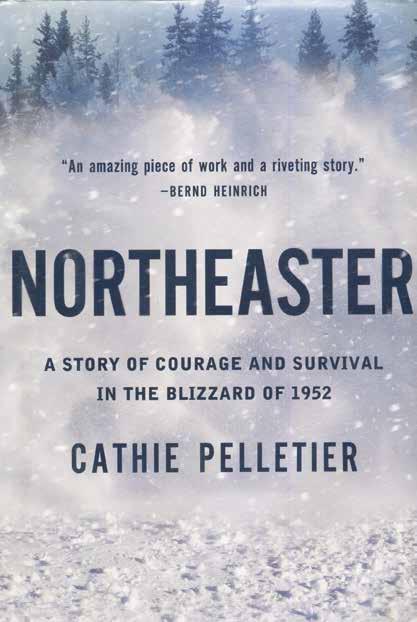
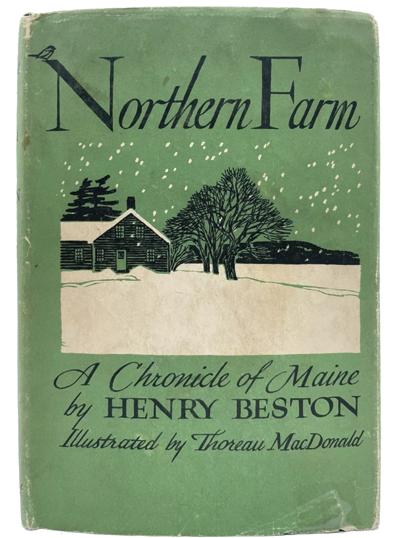


MacDonald are a perfect complement to Beston’s poetic prose.”
Millinocket writer Tim Caverly views winter as a season to pass through on the way to spring’s rebirth.
“It’s about learning to survive, dealing with weather and snow depths, and the long nights of darkness,” he said. “Every moment of every day is spent living.”
Caverly’s book “The Ranger and the Reporter” is filled with winter adventures, such as when Allagash Wilderness Waterway ranger Jim Clark (aka Caverly) snowshoes over a snow pile, only to hear cub bears crying nearby. Another story concerns a couple of ice fishermen who keep worms in their mouths to prevent them from freezing.



Other Allagash-themed books are Helen Hamlin's “Nine Mile Bridge: Three Years in the Maine Woods” and “Away From It All” by Dorothy Boone Kidney. A woman’s perspective on winter is also expressed in “We Took To the Woods” by Louise Dickinson Rich and in Cathie Pelletier’s “Northeaster,” a recounting of Maine’s historic 1952 blizzard. And last year’s bestseller “The Frozen River” by Ariel Lawhon, tells the story of a 1778 crime, in which a midwife examines a man’s body discovered in the icy Kennebec River.
Winter is also at the heart of Kenneth Roberts’ 1930 novel “Arundel,” involving Benedict Arnold’s failed 1775 march up the Kennebec River valley to Quebec.

And if Southwest Harbor covered in artificial snow is your passion, Stephen King’s 1999 TV miniseries “Storm of the Century,” which was filmed in that coastal town, will fit the bill. “Blood and Money,” a 2020 movie shot in western Maine, about a hunter’s grisly discovery, has a more realistic wintry landscape.
Henry David Thoreau, whose 1864 classic “The Maine Woods” examines our coldest month, might have summed up the season best: “One must maintain a little bit of summer, even in the middle of winter.”

Autumn’s brilliant foliage has carpeted the ground and faded to a monochromatic


BY ROBIN CLIFFORD WOOD
brown. The dazzling, angled light of October has given way to increasing darkness and a little bite in the air. Bears aren’t the only animals shifting into hibernation mode. Humans, too, shift their activities indoors as winter approaches, finding things to do in our cozy dens.
What better time to delve into books?
For those of you who love the state of Maine, here is a warm and wonderful selection of recently published books to
browse through by the fireside with a cup of hot chocolate and cozy slippers. If you aren’t already a Maine devotee, these books will make you fall in love with our glorious state — its forests and seascapes, its hardworking people, and abundance of beauty.
These four authors, inspired by the people and places of Maine, shared their hopes that readers will be moved to notice, protect, and revel in the beautiful places we call home.
BY JENNIFER NEVES
Neves’ little collection of “essays and vignettes” introduces us to a loving and chaotic young family living on a rambling piece of inland property in Maine. The book is filled with laughter and thoughtful reflection, highlighting the craziness and delight of raising a passel of young children in an atmosphere of free exploration, including one boy’s leech collections, a roving woodpile, and skunks in the back of the car.
“I want to remind myself and others that in chaos there is usually joy,” Neves said. “I love the idea that something I write might help someone slow down, take a deep breath, and feel gratitude for the natural beauty that surrounds them, and for the unique and wonderful people that enrich their lives.”
BY RON JOSEPH
Ron Joseph’s collection of essays recounts a life immersed in Maine’s outdoors, from his childhood working on his grandparents’ farm in Mercer to his adulthood as a wildlife biologist. Part of the book’s charm is Joseph himself as a central character. Joseph grows and evolves over a lifetime of colorful experiences with both animals and humans in the wild. Many of the stories were first published as standalone columns, so you could almost dip into the book anywhere, but a lovely narrative unfolds if you read from beginning to end.
“I hope in some small way my book sheds light on how wonderful Maine is,” Joseph said. “It needs everyone to help conserve our abundant natural resources.”



“A COASTAL COMPANION: A YEAR IN THE GULF OF MAINE, FROM CAPE COD TO CANADA”
BY CATHERINE SCHMITT

“WILD
“A Coastal Companion,” newly re-issued in 2023, meanders through a year, day by day, exploring a multitude of perspectives on the threshold region between sea and land. In a wonderful collaboration, 12 Maine poets and two illustrators join forces with the author to add texture, whimsy, and beauty to the marvelous natural wonders of geologic history, flora, fauna, seascape, and landscape. Flip open to any page, and you’ll learn something new about the 7000-mile Gulf of Maine coastline, which stretches from Nova Scotia to Massachusetts. “I hope readers get a sense of the Gulf of Maine as a place, a shared identity and also responsibility. What happens out there affects all of us here,” Schmitt said.
BY MARGIE PATLAK
“Wild and Wondrous” is a jaw-droppingly gorgeous book of Maine photography. While you sit by the winter fireside, Margie Patlak’s landscapes will immerse you in light and shadow, mist and sunlight, flaming blueberry barrens and monochromatic icescapes. Patlak’s closeup photography is equally stunning, from fox and porcupine portraits to a vivid pattern of larval insects in a tide pool. But don’t just flip through her photographs. Patlak’s writing, too, is lovely and spare, reverent and contemplative. This is a book to savor and enjoy time and again.
Patlak said she hopes “to disrupt the reader’s normal frame of reference and inspire wonder.” Her own sense of wonder is evoked through her words and photographs. “Nature is the ultimate artist,” she said, “I am merely a scribe.”
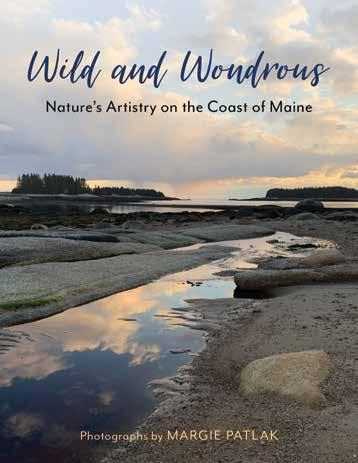

ROBIN CLIFFORD WOOD is the award-winning author of “The Field House,” a biography-memoir hybrid about Maine author Rachel Field. For the last 20 years she has immersed herself in Maine’s writing world — as columnist, poet, blogger, essayist, teacher, student, and colleague. To learn more, visit her website: robincliffordwood.com.


SMOOTHIES FROM MAINELY JUICE IN BANGOR
My winter mood booster would have to be fresh smoothies. I’ve been stopping by Mainely Juice on Main Street in downtown Bangor on a regular basis just to get 16 ounces of ice cold, fruity goodness. My favorite smoothie options are the Pink Sunrise (dragonfruit, mango, banana, and almond milk) and the Tangy Twist (OJ, strawberry, pineapple, and mango). Mainely Juice also offers extras such as whey protein and almond butter to include in your smoothie order. It’s a small, pick-me-up treat that I love every time.
—MARISSA DONOVAN


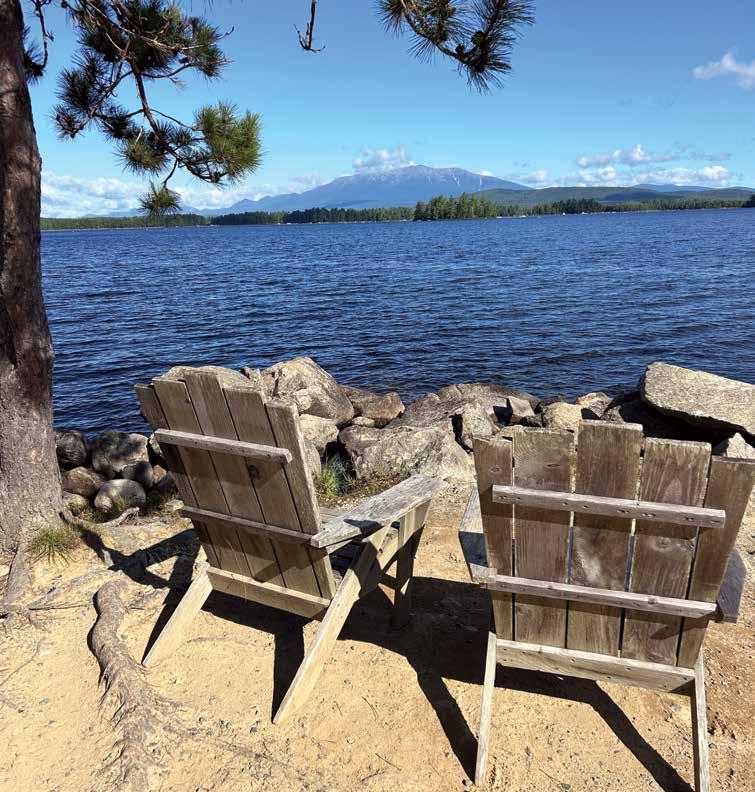
For a recent wedding, my family and I found ourselves traveling up to Millinocket and into the woods to the New England Outdoor Center (NEOC). After a gorgeous wedding at the beautiful event center with views of Mount Katahdin, we spent the next two days taking advantage of just a little of what NEOC has to offer — which is a lot. New England Outdoor Center is right next to Baxter State Park, and includes Twin Pine Cabins (a collection of sleeping accommodations from rustic lakeside cabins to swanky lodges), River Drivers Restaurant, and Knife Edge Brewing. I love a campy vacation where I don’t have to cook, and the food, the beer, the pizza — all amazing. We kayaked around Millinocket Lake, jumped in when the afternoon got warm, enjoyed a fire pit under an amazingly starry sky, and promised to go back soon. NEOC is open year-round, with cross-country ski trails, snowshoeing, fat tire biking, ice fishing, and more during the upcoming cold weather months.


My current obsession is getting enough “plant points” each week. After reading current research about gut health and the importance of getting a variety of plant-based fibers in the diet, I have followed







WBY ANNE GABBINAELLI
ith the holiday season comes endless baked treats like cookies, pies, and breads, but the best biscuits for the festivities are those prepared with Bakewell Cream made right here in Maine.
During World War II, there was a shortage of cream of tartar, an essential ingredient of baking powder. Bangor chemist Byron Smith concocted a leavening agent of sodium acid pyrophosphate mixed with re-dried starch and called it Bakewell Cream. Smith’s pure Yankee ingenuity resulted in the muchloved baking staple which is now sold worldwide.
“The secret to the cream is it’s a leavening agent, so it helps things rise lighter and fluff ier,” said Jim Collins, owner of The New England Cupboard, a specialty food mix manufacturer and distributor in Hermon.
“It’s actually a multipurpose product,” Collins said. “Technically Bakewell Cream is a cream of tartar, and when you add baking soda to it, you then have created your own double-acting baking powder.
Baking powder’s shelf life is two years, but Bakewell Cream’s shelf life is four years. It’s gluten free, aluminum free, and GMO free, even though these things were not on anyone’s mind in the 1940s.”
Like everything in Maine, there are sea sons — and Bakewell Cream’s paramount

season is the holidays. But Collins said they have other popular times of the year too.
“Summer is popover season and we sell a lot in the Bar Harbor area. Fall is apple crisp season, so we sell to apple orchards, and then of course there is the Christmas holiday season.”
Tucked away in a Hermon industrial park with its three employees, New England Cupboard manufactures everything from scratch according to Collins.
“We produce dip mixes under the name The Winterport Co., Jimbo’s Spice Rubs, Cook in the Kitchen — which is gourmet pancake and waffle mixes, The Cupboard’s specialty bread and muffins mixes and scones, and the original Bakewell Cream,” Collins said.

A long-time, passionate chef himself,
Collins purchased The New England Cupboard 16 years ago. He is only the fourth owner since Bakewell Cream’s inception some 80 years ago.
Though found mostly in New England, Collins has shipped the product throughout the United States and all over the world. King Arthur Flour is also a promoter of Bakewell Cream, writing on its website: “Many bakers prefer it for the lightness and loftiness it gives biscuits.” The classic Maine biscuit recipe can be found on the back of the can.
You can find Bakewell Cream in most Hannaford and independent grocery stores. Visit newenglandcupboard.com for more information.



INGREDIENTS
¾ cup brown sugar
¾ cup soft butter
tsp Bakewell Cream®
½ cup chopped maraschino cherries, drained
tsp baking soda


6 oz butterscotch bits
Confectioner’s sugar
INSTRUCTIONS
Combine sugar, butter, egg, and vanilla. Add 2 cups flour, salt, Bakewell Cream®, and baking soda; mix well. In a small bowl, combine 2 Tbsp flour and cherries. Stir in cherry mixture and butterscotch bits.
Spread in greased and floured 13x9 inch pan. Bake 20-25 minutes at 375° F until edges are lightly brown. Sprinkle with confectioner’s sugar while warm. Cool and cut into squares.

AS FEW DO, BLANKETED
STORY & PHOTOS BY AISLINN SARNACKI
A FROSTY WIND swept over the empty parking lot, carrying with it a flurry of lacy snowflakes. From the top of Cadillac Mountain, Acadia National Park appeared deserted. Then, out of ice-caked pines, a hiker lumbered forth on snowshoes. Her bundled-up form paused atop a rise as she took in the view — layers of frozen hills and the shimmering ocean beyond.
She wasn’t the only visitor in the park soaking up the bright sunshine that day. Scattered throughout Acadia, winter adventurers trudged up mountains and carefully picked their way along the icy shore, viewed ocean birds through binoculars, and skated across ponds.
Acadia is a gorgeous place to play in the winter, when few tourists think to visit. Snow clings to rosy granite cliffs and spruce boughs. Ocean water freezes over beach cobbles, making them sparkle.
However, if you are looking to explore, be sure to prepare with the proper gear. Warm clothing and ice cleats are a must. When enough snow covers the ground, you may want to use snowshoes or cross-country skis.
Much of the scenic Park Loop Road is closed to motor vehicles during the winter, yet most destinations within the park are still easily accessible from other roads and trailheads.
Dogs are permitted but must be kept on leash, which cannot exceed 6 feet in length.
Winter maps of the park, which show road closures and cross-country ski routes, can be found at nps.gov/acad. That’s also where you can purchase your online entrance pass and find additional information about the park and its rules.
Here are some of my favorite winter hikes in Acadia, from easy paths to day-long mountain treks.

One of the least-known peaks in the park, Cedar Swamp Mountain offers open views of MDI and the sparkling ocean, though it rises just 942 feet above sea level. The 3.2-mile hike leads through an enchanting forest and past an icy waterfall on its way to the summit.
If little snow covers the ground, keep an eye out for low-lying wintergreen, which grows in abundance along the trail. These waxy leaves stay green yearround, and they smell and taste delightfully like, well, wintergreen.
DIRECTIONS: The most direct route up Cedar Swamp Mountain starts at Brown Mountain Gatehouse parking area on Route 3-Route 198 in Northeast Harbor, across from Lower Hadlock Pond. From there, you walk along a carriage road to find the Sargent South Ridge Trail, which leads to the top of Cedar Swamp Mountain.


If you’re standing on the summit of Cedar Swamp Mountain and have a lot of energy to spend, you may consider continuing on to the summit of Sargent, the second tallest peak in the park. Its peak is so open and expansive that, when covered in snow and ice, it gives the impression you’re trekking through the tundra or some frozen lunarscape.
Rising 1,368 feet above sea level, Sargent is one of the more arduous hikes in the park, especially when you factor in the challenge of snow and ice. Acadia’s vast trail network offers a few options for hiking the mountain, with round-trip hikes ranging from 3.5 to 6.5 miles. From the peak, enjoy views of the nearby Bubbles and Cadillac Mountain to the east, Somes Sound to the west and a number of islands to the south.
DIRECTIONS: Trails leading up Sargent Mountain can be accessed from a few different parking areas in the winter, including Brown Mountain Gatehouse parking area and Parkman Mountain Trailhead parking, which are both on Route 3-Route 198 in Northeast Harbor near Lower Hadlock Pond. Another option would be to park at Jordan Pond House and navigate around the pond for a longer approach to the mountain.
The snow-covered


EASY
This little-known trail is located right outside downtown Bar Harbor and visits the ruins of a home that was owned by George B. Dorr, a man known as the “Father of Acadia.” Dorr served as the park’s first superintendent from 1919 to 1944, and donated the 58-acre property — known as Old Farm — to the park two years before his death.
Measuring just 0.4-mile long, the relatively flat and smooth trail threads through a lovely mixed forest to access a rocky beach and granite outcroppings. Also along the shore, you’ll find stone blocks that outline what’s left of Dorr’s saltwater pool.
DIRECTIONS: From the intersection of Mount Desert Street and Main Street in downtown Bar Harbor (The Village Green), drive south on Main Street for 1 mile. A small parking lot for the trail will be on your left, just before Old Farm Road.
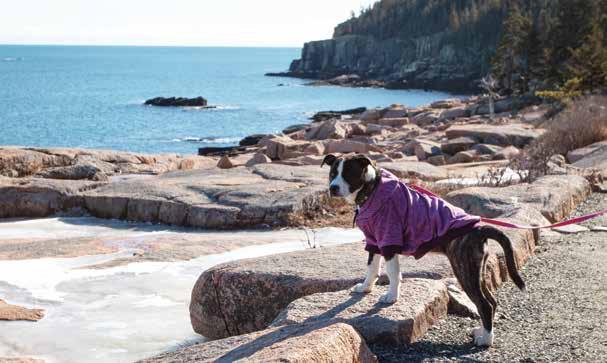
An especially popular walkway in the summertime, the Ocean Path measures just over 2 miles, connecting the famous Sand Beach to scenic Otter Point. The trail is wide and surfaced with gravel much of the way, with some more rugged sections near Otter Point.
On this hike, you can enjoy views of the ocean from some of Acadia’s most dramatic granite cliffs. You’ll also pass by one of the park’s most famous cobble beaches, and lining the trail are the park’s iconic pitch pine trees. Winter is a wonderful time to spot loons and a variety of ducks fishing along the coast, so bring your binoculars!
DIRECTIONS: Several parking lots provide access to the Ocean Path, and they’re all located off a one-way section of the Park Loop Road that remains open in the winter. The parking lots for Sand Beach, Thunder Hole, and Gorham Mountain Trail are good options. To get to that section of the Park Loop Road in the winter, drive to the south end of Schooner Head Road in Bar Harbor.
AISLINN SARNACKI is a Registered Maine Guide and the author of three guidebooks: “Dog-Friendly Hikes in Maine,” “Maine Hikes Off the Beaten Path” and “Family Friendly Hikes in Maine.” Follow her adventures at aislinnsarnacki.com.

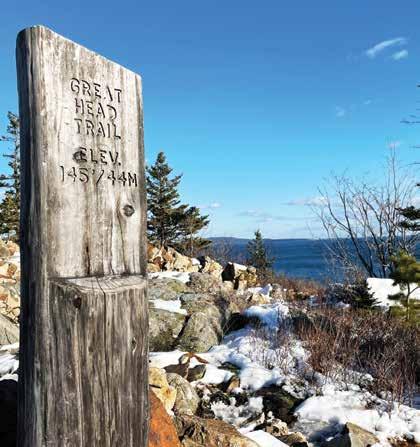
This hike starts at Sand Beach, and there’s nothing quite like standing alone on that vast stretch of silky sand. A perpetually crowded spot in the summer, it’s often empty in the winter. And what’s more, you can take your dog during the colder months — a big no-no during the busy season.
From the east end of the beach, to find Great Head, you’ll follow a staircase into the forest, then clamber over granite humps, following a blueblazed trail along the rocky shoreline. The loop hike is just under 2 miles.
Upon reaching Great Head, which is located 145 feet above sea level, you’ll find the ruins of a 1915 tea house. Once a squat, round, 145-foot-tall stone tower, it served as an entertaining space for the Satterlee family’s guests. It was torn down by the National Park Service in the 1960s due to safety concerns.
DIRECTIONS: The hike starts at the Sand Beach parking lot, which is open in the winter. To reach it, drive to the south end of Schooner Head Road in Bar Harbor, then turn right (across from Schooner Head Overlook) and then left onto the one-way section of Park Loop Road. The large parking lot will be on your left in about 0.5 mile.













































































































BY STEPHANIE BOUCHARD
When Tom Jamieson was attending the College of the Atlantic in Bar Harbor in the 1980s, an autoimmune condition flared up. In seeking to manage it, he tried acupuncture — and found relief.
Back in the ’80s, acupuncture was a fringe treatment option, but today, it’s more mainstream, and is even offered at some hospitals and is being covered by some health insurance plans.
With this treatment option now more accessible and affordable, you may be asking yourself: Is acupuncture right for me?
Yes, extremely thin, sterile needles are inserted into the skin at specific points. The FDA regulates acupuncture needles, which are single-use, solid (not hollow like those used to draw blood), stainless steel, and hair-thin, explains licensed acupuncturist Isabel Demers, who practices acupuncture in Newport. Once used, the needles are collected in a biohazard container and discarded.
Sometimes yes, mostly no.
“A skilled practitioner should be able to put them in with very little pain,” said Jamieson, who became a licensed acupuncturist more than a decade after he experienced it for himself and now practices in Bangor and Belfast.
Some spots — and people — are more sensitive, so there may be more of a pain response in those situations, but not once the needle is in place.
Once the needles are in you may not be able to feel them at all, but each person’s response is unique to them, said Natalie Purkey, a licensed acupuncturist who operates Gong Sun Acupuncture in Belfast.
“Sometimes it’ll be like a heavy sensation or a heat or a little tingling,” Purkey said, “but strong pain that doesn’t go away? That’s not what acupuncture is typically.”
Many people get acupuncture treatment for pain relief, but practitioners treat people for a wide range of conditions.
“I’m not going to deal with broken bones, but I can help the body heal after the bone has been set,” Jamieson said. “I can’t cure cancer, but I can help the patient deal with the effects of the chemo and help keep their energy up.”
Purkey said she sees her role as being supportive of her clients’ overall well-being, rather than being curative.
“I’m just supporting the person overall,” Purkey said, “their overall health and their body’s own ability and desire to heal itself.”
Yes; the most common styles in Maine are Traditional Chinese Medicine (TCM) and Five Element. Differences between styles include diagnostic approach. Five Element, for example, is more focused on the emotions than TCM, as well as needle placement choices, including how many to use and how deep to insert them.
“Any of the major traditions — the Japanese, TCM, or Five Element — practiced by a skilled person can be of help,” Jamieson said.
Demers agrees, but she encourages people to not get discouraged if they try acupuncture and are underwhelmed.
“Sometimes you have to find the right practitioner that you click with and . . . the style that works for you,” she said.
Initial sessions, which last longer, are more expensive, but after that typical sessions run between $70 and $130. Sessions may cost more depending on where you live because of the costs of doing business in particular locations. Some practitioners do take insurance. Those that don’t usually will offer a superbill that you can submit to your insurance provider.
CAN I TAKE MY PET TO AN ACUPUNCTURIST?
You bet!
“Most pets do really well,” said veterinary acupuncturist Michael Munzer, who owns All Creatures Acupuncture in Bucksport. “The pain receptors and the skin of dogs and cats are a little different than ours. Most of them hardly even notice the needles.”
Acupuncture for animals (including livestock animals) is similar to human acupuncture, but there are slight differences in where the points are located because their bodies are different, Munzer explained.
You’d take your pet to a veterinary acupuncturist for the same issues for which you’d see an acupuncturist yourself. One big difference, though: the acupuncturist you see for yourself can’t treat your pets (or your horses, cows, pigs, etc.). Only acupuncturists who are veterinarians trained in acupuncture can treat animals.


BY JUDY HARRISON

Some Christmas ornaments are more than just a way to decorate a tree. Those made by hand often become family keepsakes passed down through generations.
That is what Linda Perrin hopes for the people she teaches at Atlantic Art Glass in Ellsworth. Her students are learning to make ornaments by blowing through a tube to create an orb out of molten glass — to then take home and hang on their trees.
“When someone makes an ornament, it embodies the memory of being made,” Perrin said. “People keep it as an heirloom.”
Perrin, 61, estimated that she’s made 10,000 ornaments over the years.
“Each one is different and special,” she said.
For safety reasons, beginning students blow into rubber tubing rather than the traditional pipe which experienced glass blowers use. Perrin and her employees use hand tools to decorate the orb and to remove it from the pipe to cool overnight.
About 200 people each holiday season come to the Ellsworth studio to make an



ornament. The glass balls are between 3 and 4 inches in diameter and made out of molten glass heated to between 800 and 900 degrees Fahrenheit. The cost is $45 for the 20 minutes it takes to create one. Perrin also offers $95 hour-long private lessons for people who wish to make several ornaments or larger objects such as a paperweight, small bowl, or vase. She turns her furnaces off during the summer months but remains open for shoppers.
“I make glass work that is inspired by whimsy, joy, and the beauty of Maine,” she said on her website. “Sometimes my work has a modernist or animated Dr. Seuss-like quality, other times it has an elegant fluidity expressed though refined traditional glass blowing techniques. In any case, as a master craftsperson I am driven to create works of lasting value.”
And to help others do that. One of Perrin’s employees became interested in glass blowing as a teenager when she attended an ornament making workshop with her grandmother.
Perrin and her late husband, Kenneth Perrin, who died in 2022 and had roots in Sullivan, moved from a small studio in Hulls Cove in Bar Harbor to a warehouse in Ellsworth in 2005. The couple not only opened their studio in the building at 25 Pine St., they also created a living space in the building.
They met at City College in San Francisco. He was studying photography. Perrin was trying out different art forms but glassblowing captured her soul.
The Perrins also founded Artsworth, a not-for-profit group located next to their studio. The space allows community members to explore the arts through classes, exhibits, and special events.
Christmas is not the only holiday Perrin creates glass for. Shelves in her studio in late September were full of orange orbs with green glass stems in anticipation of Artsworth’s fall harvest festival in early October. She marks the winter solstice with a fire gathering in the studio parking lot that includes other artists, such as blacksmiths, who use fire to create art. And red glass hearts are popular for Valentine’s Day during her Casanova Market.
Atlantic Art Glass is open from 10 a.m. to 2 p.m. Tuesday through Friday and 10 a.m. to 2 p.m. Saturday. For more information, call 664-0222.





















TBY JODI HERSEY
he holiday season is a festive time of year full of traditions. One local long-standing tradition is the Anah Shriners’ Feztival of Trees event, where artificial Christmas trees of all shapes, sizes, and décor are on display inside the Shrine building on Broadway in Bangor. Year after year, visitors line up to walk down the aisles to see these faux pine trees, donated and generously decorated with items from area businesses and nonprofits. As stunning as they are to look at, people get even more excited about the fact that they could possibly win one — along with all the gifts decorating the branches and heaped below — for themselves in a raffle.
“I think it’s very popular due to the fact that it’s a community and family-oriented event,” said Dan Costain, chair of the Feztival of Trees. “Sometimes we see the same people come back three and four times during the event because they just love it.”
Admission is just $2 per person, children 12 and under are free, and visitors can purchase as many raffle tickets as they like for 50 cents each. There are anywhere from 65 to 70 trees and no two look alike. Some are dressed in twinkling lights and adorned with garland, tinsel, and color-coordinated ornaments, while others aren’t even a tree at all, instead businesses get really creative and choose to use products from their company strategically placed in the shape of a tree.
In years past, there have been Barbie-themed and Star Warsthemed trees, others that have been decorated with scratch tickets and gift cards, and then there are trees sprawling with kitchen appliances, power tools, fishing poles, and camping gear. Beside each one is a large white gallon bucket where people can place their raffle tickets. Visitors will also hear Christmas music, smell hot cocoa and cookies from the Gingerbread Café, and see children line up to tell Santa what they want for Christmas. Maine Savings Bank, Lougee & Fredricks, and Hammond Lumber Company are just a few of the businesses that participate in the Feztival of Trees.
“It takes 70 or more people per shift to operate [this event],” Costain said. “If it wasn’t for the Shrine volunteers and their ladies, we could never make this work.”
One of those longtime volunteers is Sheila Alley of Bangor. She’s been helping with set-up, decorations, and raffle ticket sales for 12 years.
“I do a little bit of everything,” she said. “I [also] send letters to assisted living facilities and nursing homes inviting them to a soft opening just for them, where it’s not as crowded and the elderly and handicapped in wheelchairs can come in and enjoy the event.”

One of the dozens of elaborately themed trees available to win at a past
The Anah Shriners is a fraternal organization consisting of Masons who are dedicated to helping children in need. This organization is well-known for its signature red fez hats and its involvement in parades and circuses. This philanthropic group also goes above and beyond to raise millions of dollars for the Shriners Children’s hospitals. Much of the admission fees and raffle ticket sales from the Feztival of Trees event goes to Shriners Children’s.
“The money is used to support the Shrine center with expenses and we send a substantial donation to the hospitals,” Costain said.
The Feztival of Trees is always held the weekend before and the weekend after Thanksgiving.
“To see how much it has grown has been amazing,” Alley said. “And I don’t know how but every year the trees just get better and better.”
At the end of the event, a raffle ticket is selected from each bucket and the winners are notified by phone. In 2021, Kristen Russell of Eddington was one of the lucky winners.
“We were all so excited but my son Keagan was so proud of himself,” Russell said. “He loved the mini drum kit, guitar, and amp under the Maine Savings tree. He placed one ticket in and that’s the tree we won.”
Attending the Feztival of Trees has become a family tradition for the Russells.
“We love going and seeing the trees,” Russell said. “It’s for a great cause, but it has also been a learning process for my kids to understand you may place tickets in a bin for a tree but it isn’t a guarantee you will win. It’s pure luck. But the fun of the whole event is what makes them continue to ask to go back year after year.”
Organizers say families have been fortunate to win more than once.
“When I’m selling raffle tickets someone always has a story about how they won one year or that they’re hoping they are going to win this year,” Alley said.
The 13th annual Feztival of Trees will take place Nov. 21-24 and Nov. 29Dec. 1 at 1404 Broadway in Bangor. For those who can’t make it, there is also the Downeast Feztival of Trees in Franklin and the International Feztival of Trees in Calais, which both take place in December.
“I just enjoy the whole atmosphere,” Alley said. “Everyone is so happy, cheerful, and pleasant. It’s just a heartwarming event for a good cause.”





























BY EMILY MORRISON
Every year, we all make the same New Year’s resolution: be healthier. Whether it’s shedding those pounds around our midsection or getting in more steps during the day, right around January 1, we firmly resolve to start Olympic training and a chicken broth diet simultaneously. Yeah, so you can guess how often that works out. Not very often. In my quest for mental and physical wellness (as a 45-year-old mother of three), I’ve discovered it’s best to start low and go slow. Real change doesn’t happen overnight. It doesn’t happen over several nights, weeks, or months. Change happens in the little things you commit to doing day-in and day-out for years.
So, if you’re looking for more than an overnight fix to keep your “new year new you” resolution, consider altering your time frame. I’ve spent the last two decades exercising five days a week, maintaining my goal weight and avoiding the high cholesterol, heart disease, and mood disorders that run in my family.
How? Once I committed to turning my yearly “get healthy” resolution into five measurable weekly habits, I became much better at holding myself accountable for my health.





There’s some speculation about how much water is too much and how much is not enough. Your gender, weight, and age can play a factor, but an easy rule of thumb is to multiply your weight by 2/3 (or 67%). For example, if you weigh 175 pounds, multiply that by 2/3, and you should drink about 117 ounces of water daily. And if you’re no math wiz, that’s about 14 (8-ounce) cups of water. If you sip while you drive, work, walk, and watch your favorite show, it will add up quicker than you think.



According to the Department of Health and Human Services, sugar is the most popular ingredient added to foods in the U.S. Americans consume about three pounds of added sugar a week — 41 teaspoons daily. The American Heart Association recommends six teaspoons a day for women and nine teaspoons for men. In other words, that one 12-ounce can of soda you drink at lunchtime to get you through the day can really spike your sugar intake. Is it worth giving up dessert? You be the judge. As for salt, the average American consumes more than 3,300 milligrams (mg) of sodium each day. Adults’ recommended daily sodium intake is less than 2,300 mg, about the amount of salt in one teaspoon. The American Heart Association is moving toward an even lower limit of 1,500 mg daily because the average American consumes so much excess sodium. Remember, those office treats, chocolate chip cookies, potato chips, and salted cashews are the leading causes of type 2 diabetes, heart disease, enlarged heart muscle, headaches, heart failure, high blood pressure, kidney disease, kidney stones, osteoporosis, stomach cancer, and stroke. Not so tasty now.
You can do any kind of movement you want. Do whatever floats your boat but doesn’t sink your ship. If you’re too sore to move the next day, you’ve defeated the purpose of that 4-mile run (10-mile bike ride/ 60-minute elliptical session/ 1-mile swim). There’s no need to go extreme to see results or feel more fit. Start low and go slow. You don’t have to win any speed or endurance races to prove you’re serious about moving more. Pick an activity you don’t mind doing for 20 minutes, four or five times a week, and gradually build up your time.
The Department of Health and Human Services recommends 150 minutes of moderate aerobic activity or 75 minutes of vigorous aerobic activity per week. Spreading these minutes evenly throughout the week will help you keep moving without pain or inflammation.

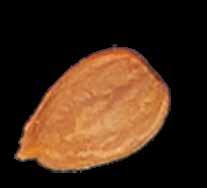
Every Sunday, look at your kitchen calendar. Consider when your appointments are, what activities you must attend, and how many obligations you have. Then, write in the times you plan on exercising this week. Be sensible about how much time you have and write it in pen, sharpie, or some other writing implement that doesn’t erase easily. Pretend you’re headed to a doctor’s appointment. You wouldn’t cancel an appointment with a doctor because you’re not feeling like it, would you? You wouldn’t reschedule a mammogram because you’re tired, and it’s only Tuesday, right? You’d show up anyway! You must treat your commitment to your health like an appointment you can’t miss. Show up for yourself. Value yourself enough to make your wellness a priority in your life.

Rome wasn’t built in a day, and neither are those six-pack abs celebrities get painted on. Some of us would just like to be able to button our pants and keep them buttoned all day. That’s okay. Some days, you’ll be better at doing all of the things (drinking more water, limiting no-no foods, moving more), but if you do most of these, most of the time, you will see real change. And when your eyes see a change, your mind will follow suit. You will feel, think, and act better because you care better for your body.
So be kind. One of the hardest things to do is hold yourself accountable when no one else keeps your feet to the fire. Sometimes, you’ll slip up and binge-eat a roll of Oreos while binge-watching your favorite TV show. Some weeks, you may miss one of your appointments to exercise because your kid has a soccer game, and it’s just as important to show up for her as it is to show up for you. That’s life.
Just tell yourself, “I’ll make my next appointment.” And then keep it. And the one after that. And the one after that. After a while, you won’t just feel like a new you. You’ll be a new you.






BY SARAH COTTRELL
As a creature of habit, I often move through my day on autopilot, hardly noticing how my tasks and actions affect my well-being. And since I don’t drink or smoke, eat a balanced diet, and exercise, I was confident that I would pass for healthy by most metrics. But I was moody and anxious for the longest time, and no matter how much effort I put toward carving out eight solid hours, I couldn’t sleep. Not coincidentally, my daily screen time averages were hovering around 11 hours. If I wasn’t working on a computer, I had my phone in my face — right up until my head hit the pillow.
But then I started unplugging for one full day a week. It didn’t take long before I noticed that my mental health was beginning to calm down — at least for that day. According to studies published at Harvard Medical School and Frontiers in Psychology, there are many benefits to taking periodic breaks from screen time, including:
• Improved mental health by decreasing anxiety and depression
• Better sleep
• Increased ability to mentally focus
• Improved interpersonal relationships
The bullet points spelled out in study after study showing how the power of unplugging can make anyone a better version of themselves is pretty convincing. So, I wondered, shouldn’t ignoring the blue light and doom scrolling on my phone fix me? Not according to April Turner, LCSW.
“I can’t entirely agree with the specificity that regular screen time contributes to stress and anxiety; I believe it is more nuanced than that,” Turner said. “I think it is the content and time of day/situation that contributes to stress and anxiety.”
According to a 2022 study in Frontiers in Psychology, researchers found that the same blue light with a terrible reputation for harming mental health and well-being has some surprisingly significant benefits, including cognitive performance, alertness, and reaction time. But the study points out that nuance is everything. Since blue light essentially wakes your brain up, staring at it right before bed can mean struggling for a good night’s sleep. It doesn’t take a rocket scientist to figure out that your overall health can suffer if you don’t get enough sleep.

The good news is that most devices now come with night mode options. And for those who truly want to block blue light, you can find blue-blocking screens for computers and blue-light-blocking lenses for eyewear.
The negative effects of blue light are not the only consideration. Choosing quality content, in addition to limiting screen time, is a key factor in ensuring that screen time doesn’t suck the joy out of your life.
“The content consumed before bedtime is more important than the actual use of screen time,” Turner said. “If a person is viewing or engaging in content that increases anxiety, fear, or anger, then that is more harmful than the actual use of the screen.”
To put this theory to the test, I removed all social media from my phone and began to rethink what type of content I engage in. Instead of scrolling on TikTok or Instagram, I listened to meditation apps or books on Audible. In addition to taking a solid day off from all screens, removing the apps
that encourage endless scrolling has been an incredible experience. My sleep and attention span have improved while my edginess has begun to calm.
“Screens can be beneficial in engaging people in reading or using meditation or prayer to help with going to sleep,” Turner said. “When using screens mindfully, use them in ways that help the body, mind, and spirit, and you may find that your relationship with the screen changes.”
On the days when I put my phone away, we host a potluck dinner with close friends — and no one uses their phone either. We gather every Friday or Saturday night to break bread and tell stories. I’ve noticed that over time, I text less with these friends than other friend groups that heavily lean on sharing memes to encourage a laugh or to show empathy. Choosing to see this friend group in person on a regular basis has had a curious effect on how we engage with one another over screens; we hardly text. And honestly, I love not being tethered to my phone to sustain that relationship.
Of course, texting won’t likely kill a friendship and not all screen time is bad for you.
“Anything that we stigmatize as all bad or all good is going to help overcome the stigma of mental health disruptions. Learning the hows and whys of the coping skills we rely on is more important than trying to eliminate something from our lives,” Turner said.
Still, there is a power in unplugging and reconnecting with yourself and the ones you love.
Curating the content I engage with on my phone has increased the amount of time I have to live life without a screen in my face. For example, after swapping out all social media apps with audiobooks on my phone, I was surprised to find how much time I suddenly had on my hands. I put on my headphones, hit play, and listen to stories while I clean the house or do yard work.
Don’t get me wrong, I still love staring at the internet sometimes, but “everything in moderation,” as the old saying goes.




If reducing your screen time sounds like something you wish to try, here are a few suggestions to get started:
CHECK OUT YOUR DAILY OR WEEKLY SCREEN TIME REPORT and set limits to help encourage unplugging.
SCHEDULE YOUR SCREEN TIME so it doesn’t affect other areas of your life, such as sleep, physical activity, or in-person socializing.
CREATE RULES about when phones are off limits, such as at the dinner table, to encourage more talking and family time.
DELETE APPS on your phone that do not leave you feeling good.
EDIT YOUR APPS. Consider using apps that don’t encourage endless scrolling and have a defined end time, such as audiobooks, meditation, or educational apps.
CONSIDER CHOOSING A FULL DAY each week or a specific time each day to unplug.
THINK ABOUT CREATING HABITS or finding hobbies that do not include a screen.
BY EMILY MORRISON
I THINK I’m living in the wrong state for someone who likes sunlight. Don’t get me wrong. Maine’s the place for me and “the way life should be” and all, but winter has got to be the longest six months of my life.
Because let’s face it, around here, the winter solstice spans half the year.
As a native Mainer, I grew up cherishing snow days and building forts in the snow-plow pile like every other kid on our street. We played “King of the Mountain,” which usually involved knocking one of my relatives or the kids up the street off said snow-plow pile.
Some days, we went further up the block to sled down the big hill at the park. When our older sisters forgot their sleds, they used us (my cousin and I) as their toboggans.
I don’t know if you’ve ever had your face mashed into an ice-crusted hill as your sibling screams, “Faster, faster!” but it’s a really good time. Even the sled rash on your face feels like a wintery badge of honor.
But that was then.
That was back when snow storms and power outages meant less time in school and more time curled up on the couch listening to my father sing old Elvis Presley songs like “Wise Men Say” and “You Ain’t Nothing But A Hound Dog.”
Thirty years later, I’ve got a finicky generator and a long driveway that frequently needs a front-loader. Now I have dishes to do, laundry to wash, and all that food in the fridge ready to go bad if someone (my husband) can’t get that blessed generator running.
I’m an adult. I can’t be “cah-cryin’ all the time.” I just need winter not to be so wintery all the time.
Thankfully, the past few have been mild. I guess we have global warming to thank, but it feels odd to be grateful for our planet’s dissolution. I don’t want the icebergs to melt. I love polar bears. They look really cute in pictures.
It’s just nice not to be cold and buried under six feet of snow every other day.
I can still run outside in insulated leggings and a puffy L.L. Bean jacket on warm days. I can eke out 40 minutes on the side of the road if there’s not too much slush. And I can still take the dogs for a walk in the fields out back.
When the spirit moves me, I can shovel a little path onto the deck and sit in a leftover lawn chair from summer to bask in the tepid sun.
All of these things (running, walking the dogs, basking) usually fool me into thinking there’s not much difference between winter and late fall, and doesn’t everybody love late fall, when the air is crisp and clean and biting?
But the thing is, after a while, winter depresses me.
Now, some people smarter than me might call this seasonal affective disorder (SAD), and yes, maybe that’s what I’m feeling. Sad. But I don’t have extreme symptoms. My appetite’s the same. My energy level is the same. My mood (though you’d have to double-check with my husband and kids) feels the same.
I just feel blah, blah, blah. A little hopeless. A little helpless. A little sleepy. A little socially withdrawn. A little bit like I’d like to go into a cave and hibernate until the sun comes out again.
That could make me a mama bear. Or a hobbit. Or a woman approaching menopause.
The thing is, I’m too young to be a snowbird. I can’t get up and leave this great state and come back in the spring. I gotta teach. I gotta write. I still have meals to make and a kid who needs me to pick up his dirty socks so they can find their way to the hamper every blessed night.
And so, I’ve got to survive this winter of my discontent just like you, my fellow Mainer. “I, I will survive. Long as I know how to love, I know I’ll stay alive...”
It’s not Elvis, but I think it’s kind of catchy.














